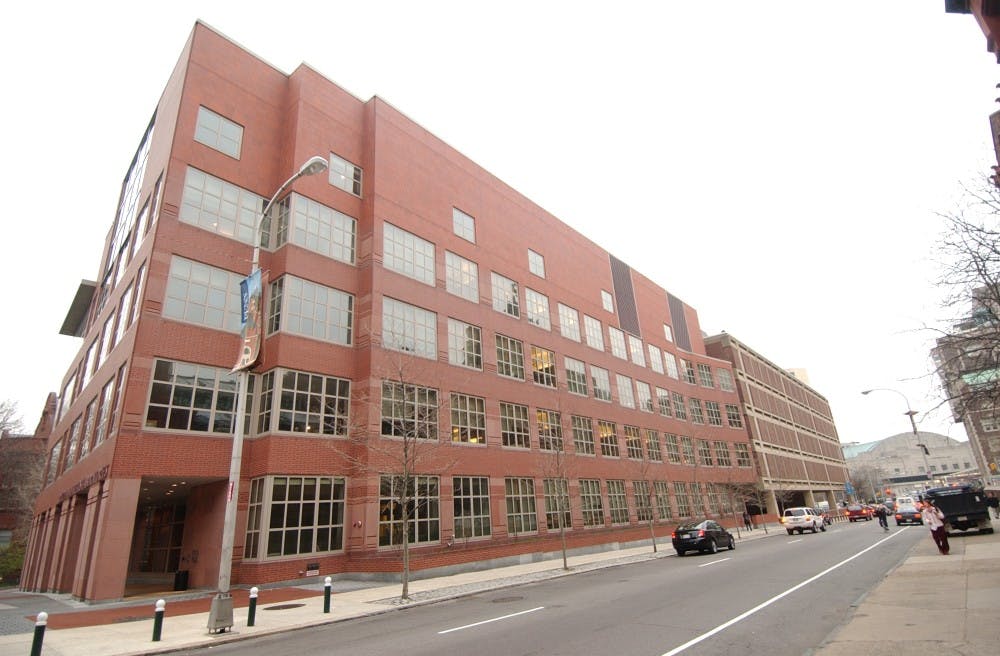Even with a new college house on the way, Penn is not out with the old and in with the new.
With donor funds largely going to new, state-of-the-art facilities, increased funding for renovations has been coming from Penn’s Century Bond Program, which started in 2012. Because buildings are constructed and renovated over several decades, technology and building codes are always advancing and changing, requiring updates to keep them green and safe.
“The energy use of a building depends on when it was built and what technology was put into the building as far as how it was designed,” said Ken Ogawa, Executive Director of Operations and Maintenance at Facilities and Real Estate Services.
University Architect David Hollenbergsaid, however, that the oldest buildings on campus are not necessarily the least energy efficient — a building’s purposes most impact its energy consumption and HVAC demands. A time-tested brick house turned office space on campus uses much less energy and uses it more efficiently than a multi-story lab building — which may have hundreds of fume hoods, multitudes of running equipment or several cold-storage freezers.
“Because of the mission of the building, the lab buildings in particular use significantly more, potentially an order of magnitude more energy per square foot than any other buildings,” Ogawa said. Thus, lab buildings are primary targets for renovations and efficiency upgrades.
Several buildings were studied to determine which should be promptly renovated. The 1973 Wing of the Chemistry Laboratories, also known as Chem ’73, was the first building to undergo renovations made possible by Century Bond funding. According to Ogawa, Chem '73's energy use declined by 67 percent following its renovation.
Chem ’73 received overhauls particularly to its HVAC and lighting systems, as its old standard technology was noticeably inefficient. Executive Director of Design and Construction Mike Dauschexplained the extensive updates to the many fume hoods in the building. Minimizing the quantity of air exchanged allows for significant energy-use reductions.
Fluorescent lighting fixtures also underwent substantial efficiency upgrades according to Ogawa. Fixtures were changed from T12 to T8 models, which reduced the number of actual lamps by 70 percent and decreased the wattage from 40 watts to 28 watts.
“In the past, energy costs were cheap. People really didn’t care too much about how much it cost to heat or cool a space, as it was a low number, plus they lacked the sophisticated control systems that we have today,” Dausch said.
Renovations funded by the Century Bond Program include the installation of systems that monitor airflow, air quality, lighting and temperature. For example, occupancy sensors turn off the lights or lower the room temperature when the room is empty for a period of time.
“We also have daylight-savings sensors in certain locations …that monitor the amount of daylight coming through windows and adjust the artificial lights when you don’t need them,” Dausch said.
Outfitting old buildings with new efficient technology is not the only step that Penn has been taking. Occupants of buildings also participate in efficiency efforts through several green programs.
The Green Labs @ Penn Programoffers guidelines to lab-users on how to stay environmentally conscious. “We’re merging the concepts of lab safety and energy conservation,” Dan Garofalo, Director of Environmental Sustainability, said.
The Penn Green Office Certification Program allows participating offices to accrue points for each step taken towards energy efficiency and environmental sustainability.
“We do a lot of presentations across campus on how to use the new equipment in the best way, to get the best benefit from the renovations and to save energy,” Garofalo added.
“The actual users of the space have an enormous contribution to the efficiency of that space," Hollenberg said, "and we’re doing our best to let people know that that’s the case."



